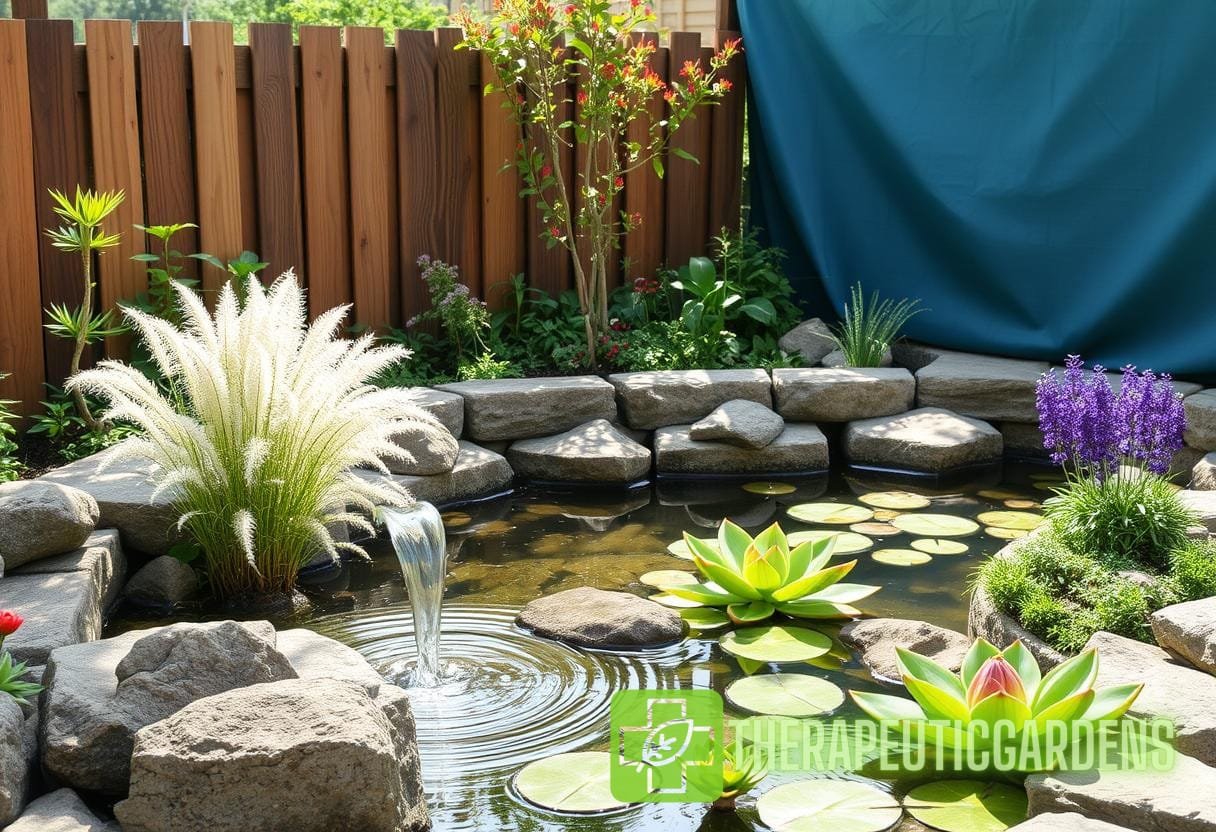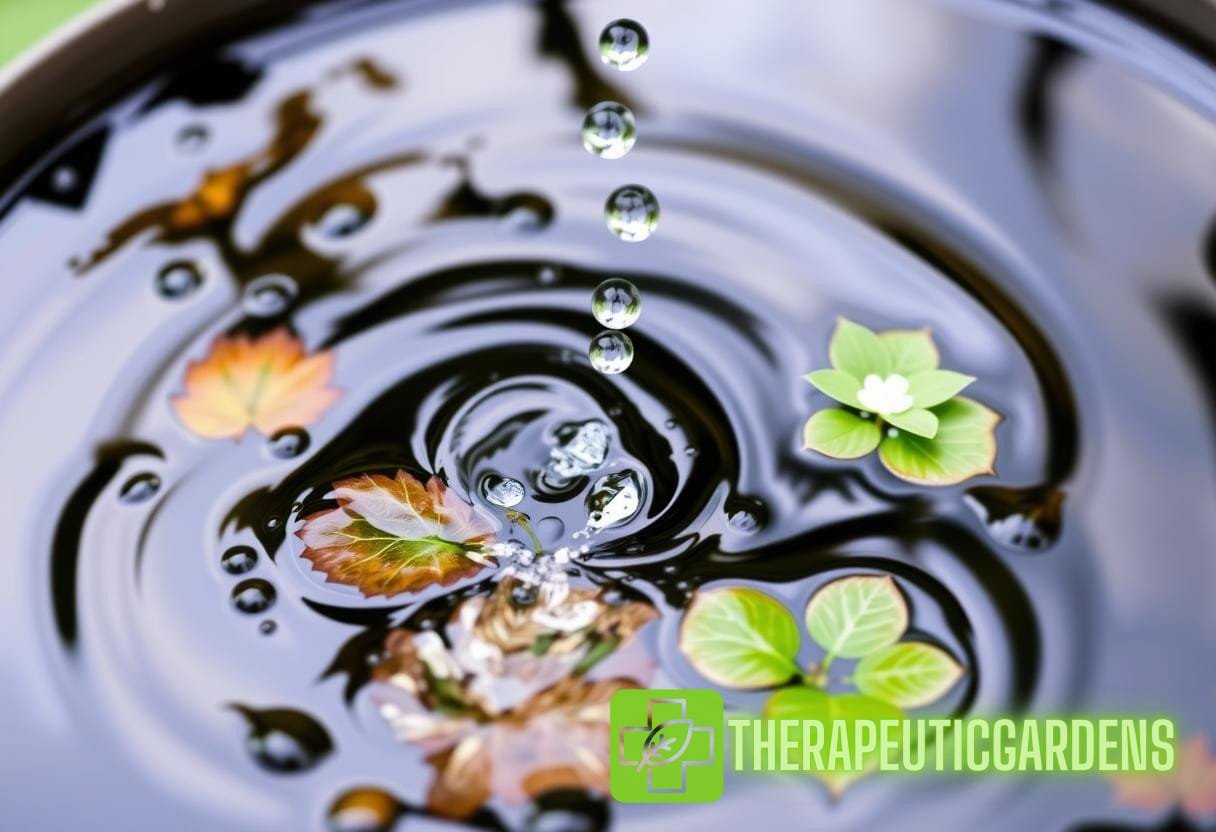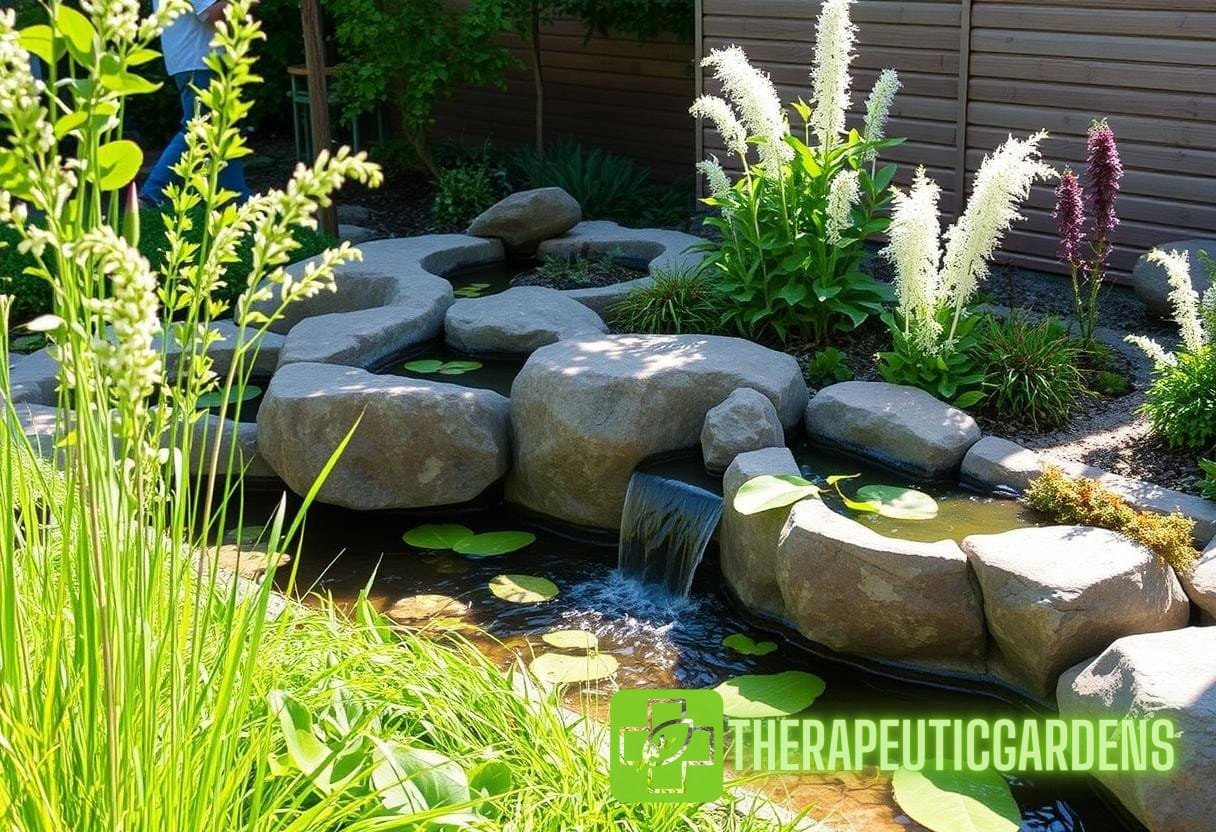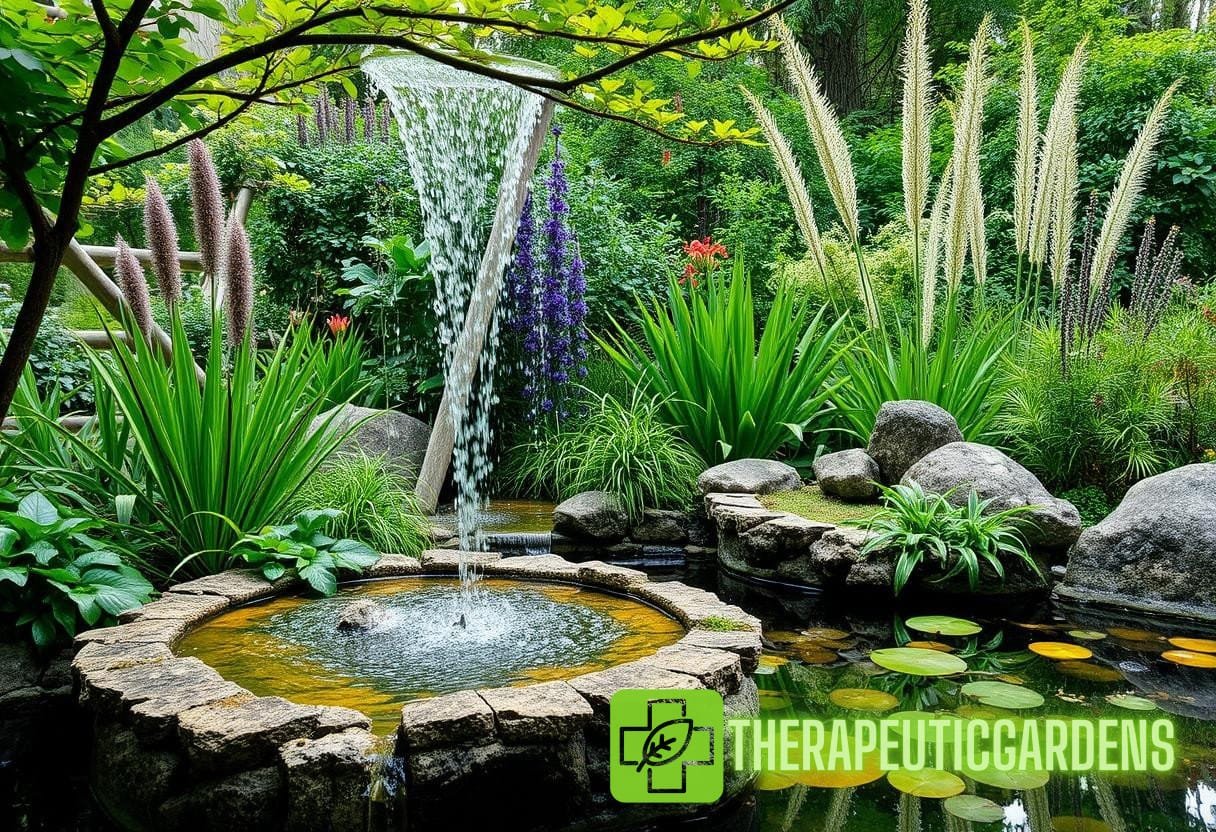Water Wisdom: Harnessing Nature’s Cycles for Timeless Therapeutic Gardening Solutions
Water, the essence of life, plays a pivotal role in our ecosystems and our organisms. When we incorporate water into gardening, we not only sustain plant life but also engage in therapeutic water gardening that can yield physical, psychological, and ecological benefits.
The Importance of Water in Gardening
Understanding the fundamental roles that water plays in gardening is crucial for optimizing plant health. Water serves to:
- Facilitate nutrient transport in plants.
- Regulate temperature through transpiration.
- Support soil structure, ensuring aeration and root growth.
- Encourage biodiversity in garden ecosystems.
According to the US Geological Survey (USGS), freshwater ecosystems cover about 0.8% of the Earth’s surface, yet they are critical habitats for over 10% of all known species. This underscores the necessity of safeguarding and sustainably managing our precious water resources in therapeutic water gardening contexts.
Therapeutic Water Gardening: A Healing Practice
Therapeutic water gardening integrates principles of horticulture with health practices. The soothing effects of water, combined with the act of gardening, can alleviate stress, promote physical activity, and foster social interaction. Studies, such as a systematic review published in the Journal of Environmental Psychology, have demonstrated the significant mental health benefits derived from engaging in gardening (Kaplan, 2020).
Creating a Therapeutic Water Garden
Starting a therapeutic water gardening project requires thoughtful planning and consideration of natural cycles. Here’s how you can design your own therapeutic water garden:
- Site Selection: Choose a location that receives ample sunlight, preferably 6–8 hours a day.
- Water Source: Identify a reliable water source, such as a rain barrel, pond, or river, to support cyclical irrigation.
- Plant Selection: Opt for native aquatic plants, as they are better adapted to local conditions and contribute to biodiversity.
- Construction: Design features like ponds, streams, or fountains to enhance water circulation and aesthetic appeal.
For more in-depth guidance on the placement and design of these elements, refer to our internal link on Water Garden Design Tips.
Understanding Nature’s Cycles
Embracing nature’s cycles is fundamental to sustainable gardening practices. Understanding the water cycle—precipitation, infiltration, evaporation, and runoff—is essential for designing gardens that work harmoniously with the environment. When implemented correctly, therapeutic water gardening takes advantage of these cycles to minimize water use and optimize growth conditions.
Rainwater Harvesting
One effective technique to enhance water availability is rainwater harvesting. This involves collecting and storing rainwater for gardening purposes. Implementing rain barrels can:
- Reduce dependency on municipal water systems.
- Lower water bills.
- Decrease run-off and erosion.
As an example, a study conducted by the University of Connecticut Extension Service found that households using rainwater harvesting saved up to 50% on water costs during the summer months (Jones, 2021).
Water Quality and Ecosystem Health
The quality of water used in therapeutic water gardening significantly impacts plant health and ecosystem integrity. Contaminants from urban run-off can harm aquatic plants and insects, disrupting local food webs. Regular testing for pH, turbidity, and nutrient concentrations is essential. The ideal pH for most aquatic plants ranges from 6.5 to 7.5. To maintain water quality, consider:
- Incorporating floating plants to reduce algae growth.
- Using natural filtration systems, such as biofiltration ponds.
- Regularly removing debris and organic matter from water systems.
For more on maintaining water quality, visit our internal link on Water Quality Management.
Benefits of Biodiversity in Water Gardens
Enhancing biodiversity within water gardens by incorporating various plant and animal species fosters resilience in ecosystems. Biodiversity in therapeutic water gardening accomplishes the following:
- Increases ecosystem productivity.
- Improves nutrient cycling and water purification.
- Enhances aesthetic appeal and promotes wildlife habitats.
Research from the World Resources Institute emphasizes that biodiverse systems are more robust and capable of withstanding changes and stresses from climate change (WRI, 2019).
Utilizing Native Plant Species
When designing a therapeutic water gardening layout, consider using native plant species. Native plants are adapted to local climatic conditions and require less maintenance, making them more sustainable options. For instance, plants like cattails, water lilies, and duckweed naturally grow in wetland environments and provide vital habitats for wildlife. According to the National Wildlife Federation, landscaping with native plants can support over 75% of local wildlife species (NWF, 2021).
Integrating Landscaping Techniques
A vital aspect of therapeutic water gardening is integrating landscaping techniques that are reflective of ecological principles. Strategies include:

- Permaculture: Designs that mimic natural ecosystems promote regenerative practices.
- Companion Planting: Using complementary species together maximizes growth and minimizes pests.
- Soil Health: Prioritize organic soil amendments and mulching to maintain soil moisture and health.
Incorporating these techniques helps create a holistic garden that benefits both users and the environment.
Water as a Therapeutic Element
The sound and sight of water can have profound therapeutic effects on individuals. Research supports the idea that gardens featuring water elements can:
- Reduce anxiety and improve mood.
- Encourage mindfulness and relaxation.
- Provide sensory stimulation beneficial for cognitive and emotional well-being.
In a study highlighted by the Horticultural Therapy Journal, participants reported increased feelings of calm and focus after spending time in gardens with water features (Smith, 2022).
Data-Driven Approaches in Water Gardening
Employing data-driven approaches in managing water resources can significantly enhance the efficiency of therapeutic water gardening. This can include tools and techniques such as:
- Soil moisture sensors to optimize irrigation frequency.
- Water usage tracking systems to monitor consumption.
- GIS (Geographic Information System) tools for analyzing drainage areas.
Utilities and state departments increasingly offer data and resources for efficient water use, allowing gardeners to make informed decisions based on real-time information.
Community Engagement and Education
Building community engagement through educational workshops on therapeutic water gardening can foster sustainability. Local gardening clubs and cooperatives often host events to share best practices, tools, and resources. Initiatives can include:
- Workshops on building rain gardens.
- Community garden projects that highlight the importance of water conservation.
- Guest speakers on environmental stewardship and sustainability.
Participating in community efforts not only promotes sustainable practices but also strengthens communal ties and bolsters support systems for gardeners.
Case Study: Blue Sky Waters Capstone Project
A notable case in the domain of therapeutic water gardening is the Blue Sky Waters Project in Portland, Oregon. This project transformed a degraded urban area into a thriving habitat that integrates water gardening for community healing and restoration. The outcomes were significant:
- Improved water quality in local streams due to increased vegetation cover.
- Enhanced accessibility for community members seeking therapeutic interactions with nature.
- A 30% increase in local wildlife, including pollinators and amphibians.
The project illustrates how a collaborative approach to gardening can yield sustainable and therapeutic benefits while enhancing biodiversity.
Challenges and Limitations
While therapeutic water gardening offers numerous benefits, it is not without its challenges. Common barriers include:
- Water Scarcity: Areas with limited water resources may face difficulties in establishing water features.
- Maintenance Needs: Water gardens can require significant upkeep to prevent stagnation and maintain quality.
- Regulatory Issues: Local regulations may impose restrictions on the installation of certain landscapes or water features.
Understanding these challenges is essential for developing viable solutions and ensuring long-term sustainability.
Innovative Technologies in Water Gardening
Technological advancements now play an influential role in enhancing therapeutic water gardening practices. Innovations include:
- Smart Irrigation Systems: Automated systems that adjust watering schedules based on real-time data.
- Water Quality Sensors: Devices that continuously monitor in-situ water quality parameters.
- Mobile Applications: Tools to connect gardeners with their local ecosystem and water management resources.
Utilizing these technologies can help make water gardening more efficient and sustainable.
Conclusion
In the exploration of therapeutic water gardening, we uncover not only its rich benefits for the plant kingdom and human health but also the critical importance of working symbiotically with nature’s inherent cycles. By emphasizing sustainability, community engagement, and innovation, we endeavor to create greener, more healing environments. Ultimately, practicing water wisdom can pave the way for revitalized ecosystems that contribute to overall well-being.



